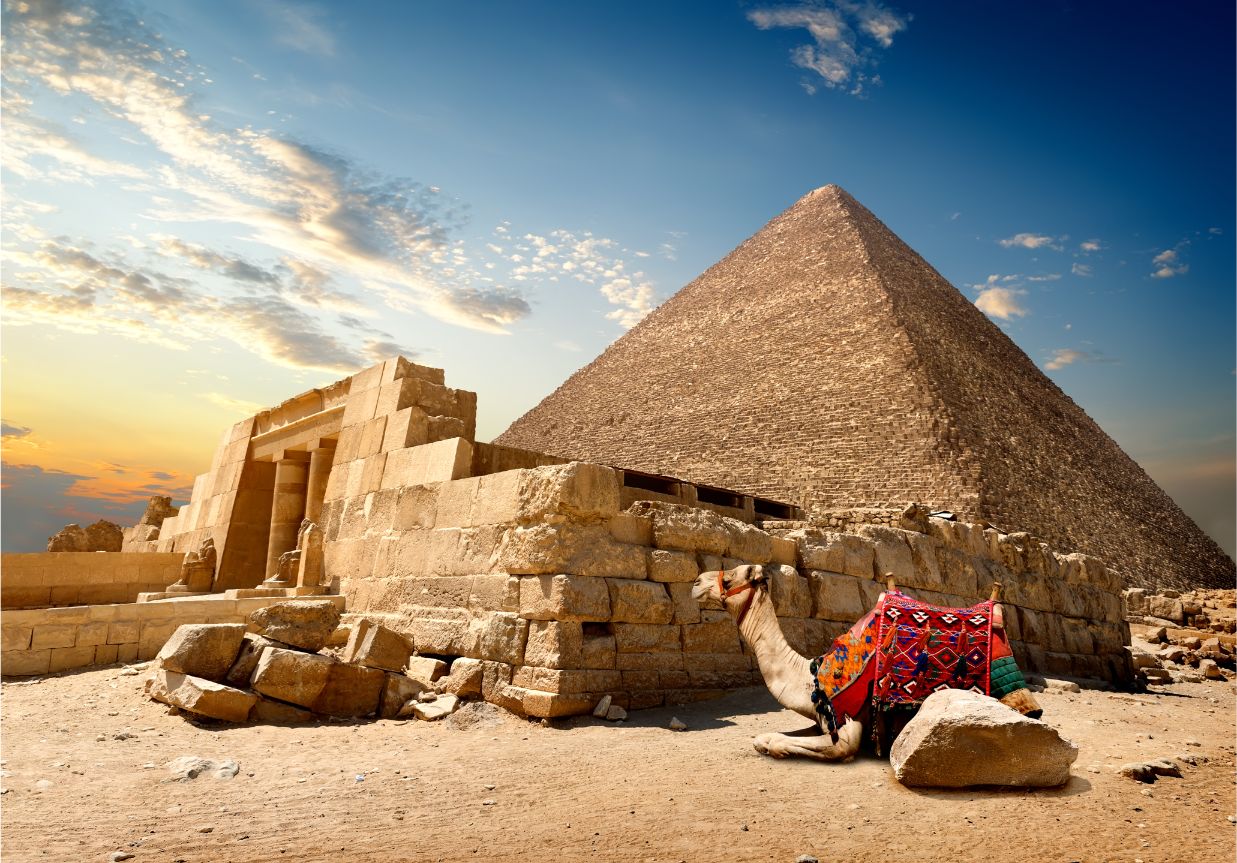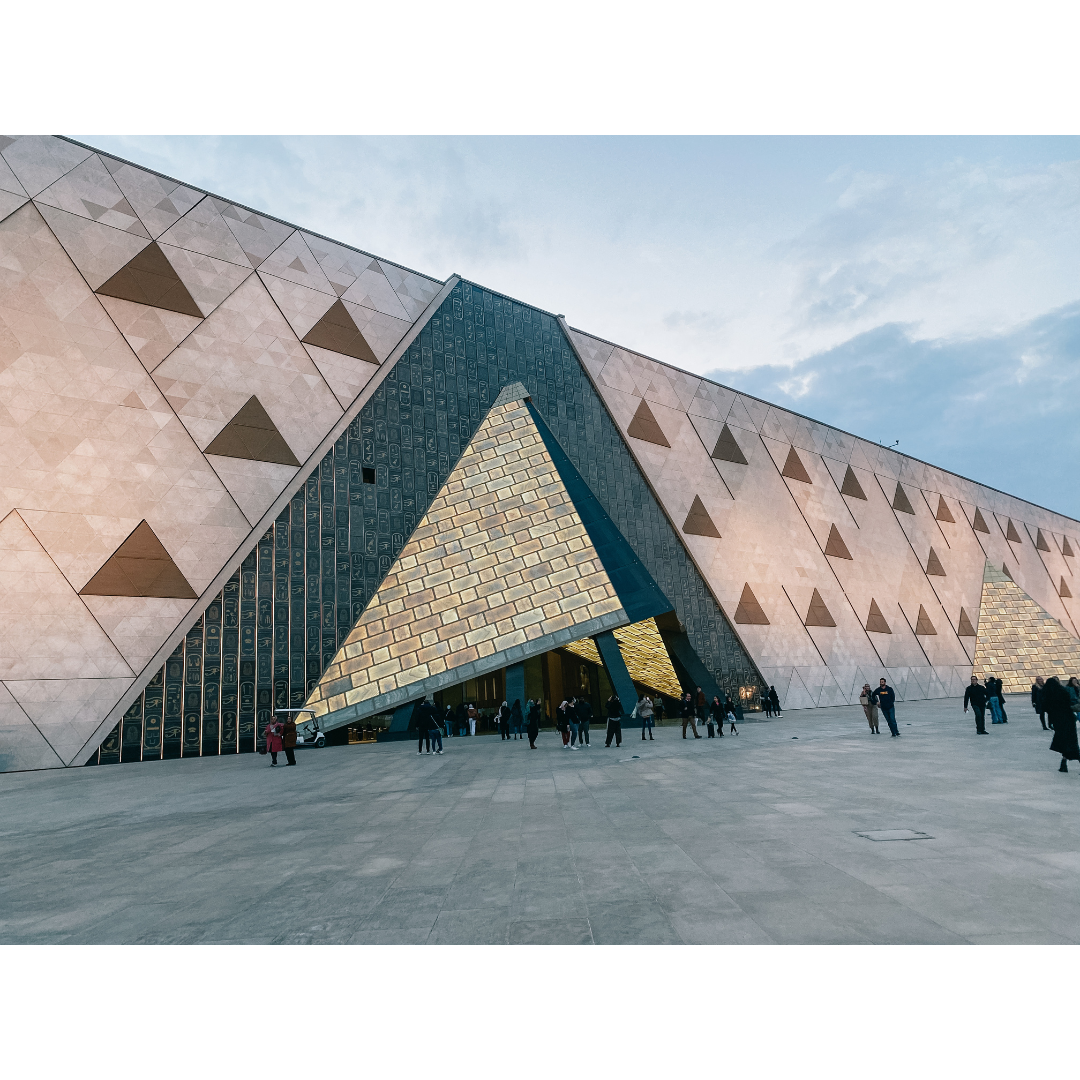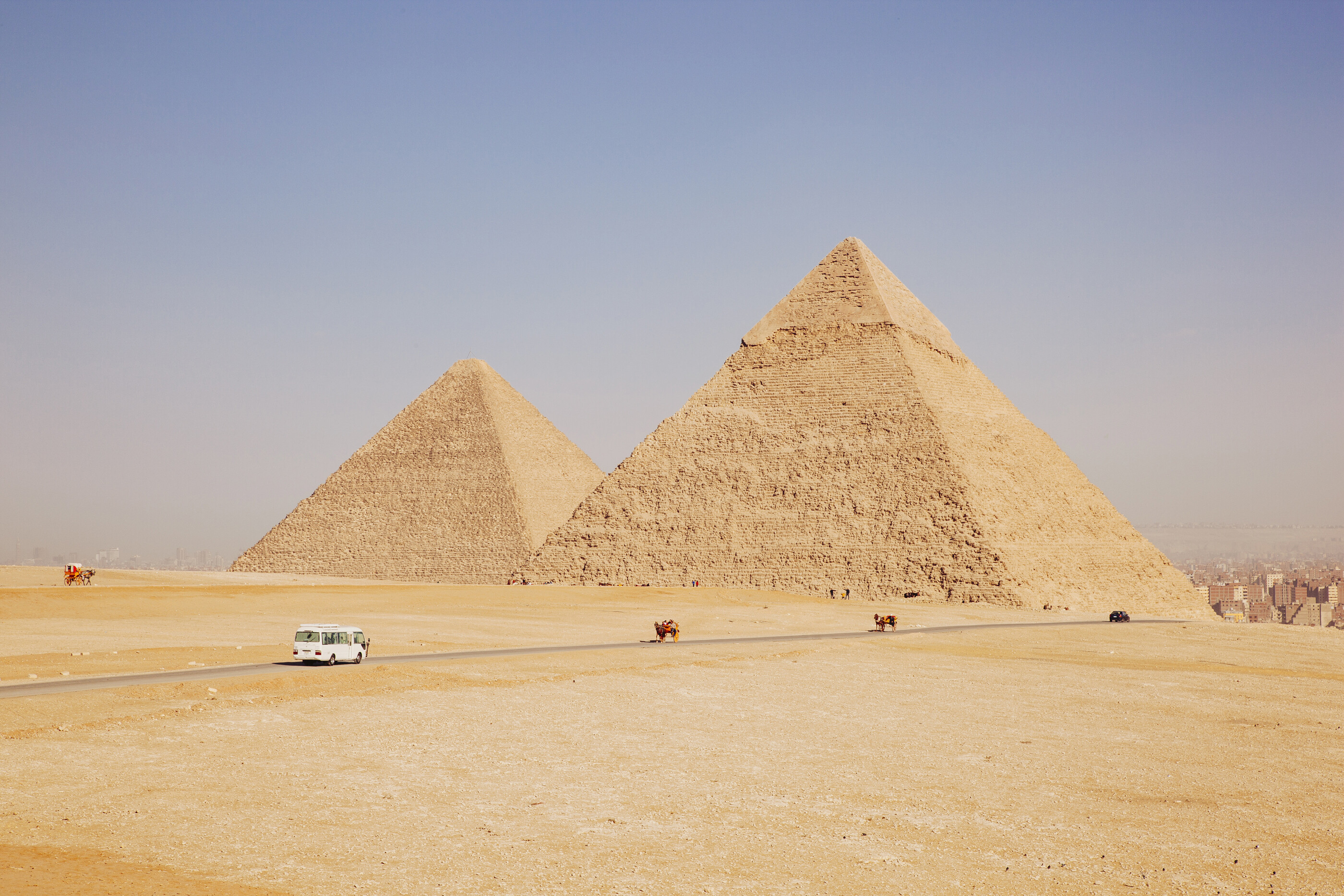
Top 10 Interesting Facts About the Pyramids of Giza
Explore Pyramids of Giza
8 min read
Category : AttractionsDestination : EgyptThe Pyramids of Giza are among the most iconic structures in the world, captivating historians, travelers, and archaeologists for over 4,500 years. These ancient monuments stand as a testament to the engineering and cultural achievements of ancient Egypt. Here’s a summarized look at 10 fascinating facts about the Pyramids of Giza, from their construction to the mysteries that still surround them today.
1. The Pyramids Are Over 4,500 Years Old
Built during Egypt’s Fourth Dynasty (around 2580–2560 BCE), the Pyramids of Giza have withstood the test of time for more than 4,500 years. The Great Pyramid of Khufu, the largest of the three pyramids, remains an iconic symbol of Egypt’s ancient civilization. Despite the ravages of time, these structures still stand tall, demonstrating the remarkable engineering skills of the ancient Egyptians.
2. Giza’s Pyramids are the Largest and Most Famous
While Egypt is home to over 80 pyramids, the three pyramids at Giza are the largest and most renowned. These were built for Pharaoh Khufu, his son Khafre, and his grandson Menkaure. The Great Pyramid is the largest and was once considered one of the Seven Wonders of the Ancient World. These pyramids stand out due to their monumental size, complex construction, and their symbolic alignment with the stars.
3. The Great Pyramid was the Tallest Man-Made Structure for Over 3,800 Years
When the Great Pyramid of Khufu was completed, it reigned as the tallest man-made structure on Earth, a distinction it held unchallenged for nearly 3,800 years. Originally soaring to a height of 146.6 meters (481 feet), it now stands at 138.8 meters (455 feet), its reduction attributed to the loss of the smooth outer casing. Yet even today, its towering presence and monumental scale continue to captivate and inspire awe.
4. The Pyramids were Covered in Smooth White Limestone
Originally, the pyramids were covered in smooth, white Tura limestone that gave them a brilliant shine under the sun. This limestone casing reflected sunlight, making the pyramids gleam like jewels. Over time, much of the polished limestone was removed, used for other construction projects, or lost during earthquakes, leaving the rough stone we see today. Despite this, the pyramids still convey a sense of grandeur.
5. The Great Pyramid is Aligned with Remarkable Precision
One of the most extraordinary features of the Great Pyramid is its alignment with the four cardinal points: north, south, east, and west. The precision of this alignment is astonishing, especially considering that the ancient Egyptians had no access to modern instruments. Researchers suggest that the Egyptians may have used the stars, or the sun’s position, to achieve such accuracy. The deviation from true north is only 3/60ths of a degree, which indicates an advanced knowledge of astronomy.
6. The Pyramids were Built Using Over 2 Million Stone Blocks
The Great Pyramid consists of approximately 2.3 million stone blocks, each weighing between 2.5 and 15 tons. This monumental construction required the labor of thousands of workers. Although the exact methods of construction remain debated, it’s believed that ramps, pulleys, and possibly levers were used to transport the massive stones into place. The sheer scale and effort involved in building these pyramids is a testament to the organizational and engineering capabilities of ancient Egypt.
7. The Pyramids were Part of a Larger Complex
The pyramids were not standalone structures; they were part of larger funerary complexes that included mortuary temples, causeways, and smaller pyramids for queens and high-ranking officials. The Pyramid of Khufu, for example, was linked to a mortuary temple by a causeway that extended toward the Valley Temple. These complexes were designed not just for the Pharaoh’s burial but also for rituals and ceremonies that helped the Pharaoh’s soul ascend to the afterlife.
The Great Sphinx of Giza, a massive limestone statue, also forms part of this complex. The Sphinx, with the body of a lion and the head of a Pharaoh, is believed to represent Khafre, the Pharaoh for whom the second-largest pyramid was built.
8. The Sphinx May Be Older than the Pyramids
While the Pyramids of Giza are undoubtedly ancient, some researchers believe the Great Sphinx could actually be even older than the pyramids themselves. This theory is supported by geological evidence that suggests the Sphinx has experienced significant water erosion, which may point to a time when Egypt’s climate was much wetter than it is today, possibly as far back as 10,000 BCE. If this theory proves correct, the Sphinx would be one of the world’s oldest monumental structures, predating the pyramids by thousands of years.
9. The Pyramids were Built as Tombs, but their Purpose was more than Burial
Although the primary function of the pyramids was to serve as tombs for the pharaohs, they had deeper symbolic significance. The pyramids were designed to help the Pharaohs’ souls ascend to the heavens and join the gods in the afterlife. The Egyptians believed that the Pharaoh was not just a ruler but a divine figure who would continue to influence the world after death. The tombs were stocked with treasures, food, and items needed for the afterlife.
Inside the pyramids, elaborate burial chambers were constructed, and elaborate passages were designed to protect the Pharaoh’s remains from robbers. These tombs were not just burial sites; they were integral to the Pharaoh’s spiritual journey into the afterlife.
10. The Pyramids Remain a Mystery
Despite centuries of research, many aspects of the Pyramids of Giza remain shrouded in mystery. The methods used to construct these immense structures are still debated by scholars. While some believe that ramps were used to move the stone blocks into place, others propose more complex theories involving levers and cranes. Similarly, the precise alignment of the pyramids with the stars or cardinal points has yet to be fully explained.
Another enduring mystery surrounds the exact purpose and symbolism of the pyramids. Why were they designed with such mathematical precision? What deeper meaning did their alignment with the cosmos hold for the ancient Egyptians? Some researchers argue that the pyramids were designed to align with particular stars or constellations, while others suggest they had a spiritual or religious purpose related to the movement of the sun.
Conclusion
The Pyramids of Giza are more than just ancient monuments; they are a window into the culture, spirituality, and achievements of ancient Egypt. From their construction methods to their alignment with the stars, these pyramids remain a source of fascination for historians, archaeologists, and tourists alike. While many questions still surround their purpose and construction, the Pyramids of Giza continue to stand as a symbol of the ingenuity and power of one of the world’s most influential ancient civilizations. Whether you are planning a trip to Egypt or simply curious about the wonders of the ancient world, the Pyramids of Giza offer an unforgettable experience and a lasting reminder of humanity’s capacity for greatness.
Related Articles

Grand Egyptian Museum Opening on July
A groundbreaking moment in archaeological history is on the horizon as the Grand Egyptian Museum (GEM).

Beyond Giza … The True Number of Pyramids in Egypt
The iconic trio of pyramids at Giza leads many to believe they know everything about Egyptian pyramids.

The Best Beaches in Egypt
The beaches of Egypt are a tropical paradise that attracts travelers from all corners of the globe. If you’re planning a trip, here’s a look at the best beaches in Egypt.
